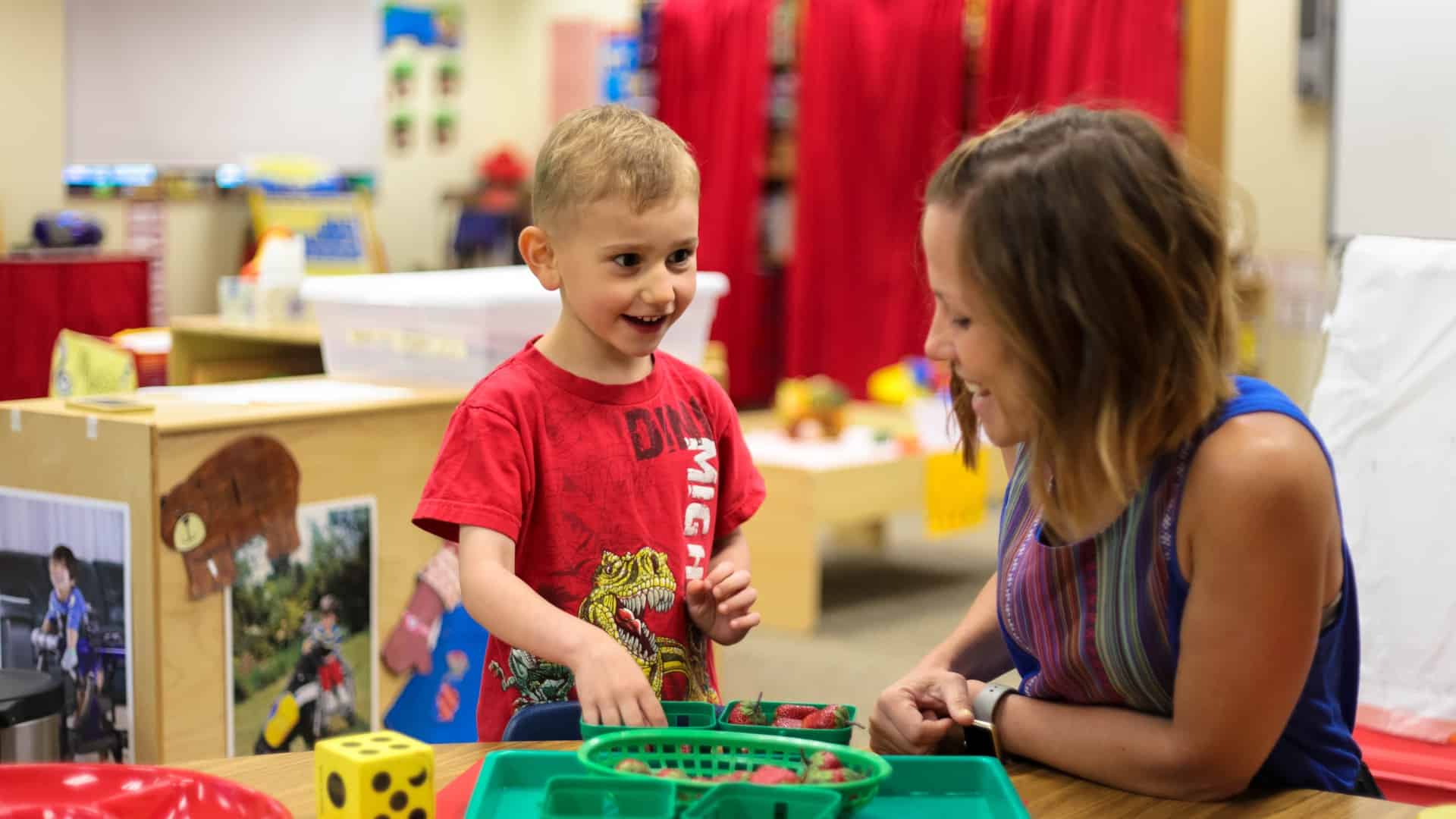
Why is building a positive relationship with your child important? Research shows that by creating positive relationships with your child, you help develop a protective factor against future behavior problems, as well as, decrease current disruptive behavior.
Every time that you engage in a behavior that helps to build a positive relationship with your child, it is like you are depositing money into their piggy bank.
Anytime you nag, criticize, or place a demand on your child, it is as though you are withdrawing money from their piggy bank. If we are withdrawing more from the child than we are depositing, then we will leave the child empty, which could trigger further problem behaviors.
Therefore, it is extremely important to build these positive relationships!
 - Dr. Jenna Edlund, PhD
- Dr. Jenna Edlund, PhD
Positive Language
Tell your child “when” Instead of saying no right away to your child’s question or request, you could tell the child when they might be able to do it. By telling them when, instead of just no, it feels more to the child like a yes answer. If your child asks to go outside to play but it is about to be their naptime, you could say, “That is a great idea! Let’s go outside and play when you wake up from your nap!”Offer a Choice
When we give children choices we increase their self-esteem because we are empowering them to make appropriate decisions and have independence. It also allows you to maintain control of the options you give the child. Replace don’t with do Too often we tell children what not to do but we never tell the children what they can do instead. Many children do not know what to do instead. If we word the direction in a positive manner telling them what to do, the expectations are very clear to them. Instead of saying “Don’t run!”, you could say “Please use walking feet”! Instead of saying, “Don’t draw on the table”, you could say, “Crayons are for drawing on paper, would you like to color on white paper or orange paper?” Use First-Then Language Another way to tell a child in a positive way is a first-then statement. “First you will take your nap, and then we will go outside to play!” This gives the child a clear idea of when they will be able to do their desired activity.How to Give Praise and Encouragement
Immediately after the Behavior You want to provide children with praise or encouragement as soon as the behavior occurs. If you wait too long to provide a praise statement, your child will not understand what they are being praised for. Frequently You want to give many encouragements or praise everyday! Even if it is a small positive behavior, PRAISE IT! For example, “I like how you put your shoes on so quickly!” Eye Contact Using eye contact helps the child to feel that they are important and to make sure that you are close enough when giving the praise. Enthusiasm Using excitement in your voice will make your praise statement more powerful to the child in changing their future behavior! Describe the Behavior Instead of just saying “Great Job!” say, “Great job for using your fork to eat your dinner!” If you don’t describe the behavior in your praise statement, the child won’t know what they did well and do it again! Example Starters for Praise and Encouragement You did an awesome job when … I am proud of the way you… You have worked so hard on… I appreciate that you did ______ so fast! Give me an extra HUGE high five for… I LOVE how you just… - Dr. Jenna Edlund, PhD
- Dr. Jenna Edlund, PhD